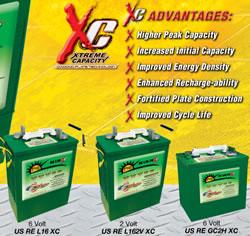Wasted wind and the UK’s curtailment challenge - Why clean energy goes unused and how technology can help
.jpg)
According to the Times, in 2025 UK households effectively paid £810 million for Scottish wind farms to stand idle, highlighting a growing problem in the country’s renewable energy sector. Here, Mike Torbitt, managing director of resistor manufacturer Cressall, explores the causes behind the UK’s wind curtailment issue and explains how resistor technology can help stabilise the grid and make the most of renewable energy.
How curtailment works
Curtailment happens when wind farms are asked to reduce or shut down generation of electricity, even where generation conditions are optimal. The reason is rarely the turbines themselves. It usually happens when the grid cannot take in the amount of power being generated, or there is no demand for it at that time.
On paper it sounds like an occasional technicality. In practice, it has become a regular issue of the UK’s energy system. Every time turbines are switched off, revenue is lost, bills rise and carbon savings are wasted. For consumers, that means paying for energy that never reaches their homes — a frustration that grows as wind makes up more and more of the power mix.
Most of the UK’s wind power comes from Scotland, where land and wind resources are plentiful. The challenge is transporting that electricity to where it’s needed. Transmission south of the border is limited so when output surges, the system cannot always absorb it. In June 2025, the Financial Times revealed that wind farms were paid to switch off 13 per cent of the time they could otherwise have been producing.
The costs are also mounting. Operators are compensated for shutting down, but those payments ultimately come from household energy bills. Environmentally, the waste is even starker: each megawatt-hour curtailed means another load of carbon that could have been avoided — the equivalent of the electricity used by around 330 homes.
The scale is particularly clear in Scotland: according to Recharge News, the nation’s grid-constrained producers curtailed 37 per cent of their output in the first half of 2025. That amounts to about 1.5 terawatt-hours of lost clean energy — enough to power 1.2 million homes for a year.
How to capture lost power
There is no single solution to preventing curtailment, but there are possible ways forward. New grid infrastructure and cross-border interconnectors would allow Scottish surplus wind to reach areas of higher demand. Vast storage schemes, from factories producing batteries to pumped hydro, would be capable of soaking up excess power and delivering it at the appropriate moment. More advanced control systems would also even out the peaks and troughs of supply and demand.
Protective technologies have an important function in surge control in renewable energy. Resistors act as thermal valves for high-voltage systems, dissipating excessive electrical power as heat to prevent overvoltage or equipment loss. Dynamic braking resistors (DBRs), for example, can be connected to generator circuits or inverters to absorb sudden spikes in power output, helping to stabilise voltage and maintain grid frequency.
Elsewhere, neutral earthing resistors (NERs) limit fault currents in high-voltage direct current (HVDC) systems and protect transformers and switchgear against thermal and mechanical stress. Properly engineered NERs ensure that the system can safely tolerate transient faults without triggering unnecessary trips, maintaining grid reliability and stability.
By incorporating DBRs and NERs, energy systems can safely handle the variable nature of renewable generation, absorbing or redirecting excess energy rather than wasting it. This improves overall grid efficiency and allows a higher proportion of renewable energy to reach consumers.
Curtailment is not just about wasted energy. It’s about missing the opportunity to cut carbon, lower bills and strengthen the UK’s energy security. With the right infrastructure and the right protective systems in place, the country can capture far more of the renewable power already being produced.
Cressall provides expert NER and DBR resistor solutions to help grids safely manage renewable energy surges. For more information and to view technical datasheets, visit the website.
Comments (0)
This post does not have any comments. Be the first to leave a comment below.
Featured Product

